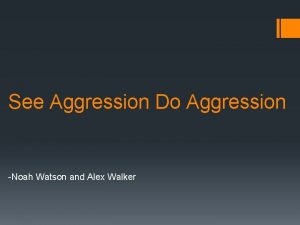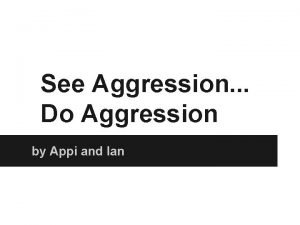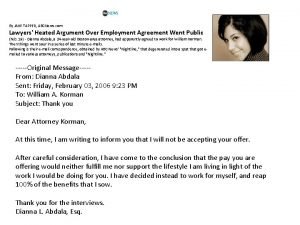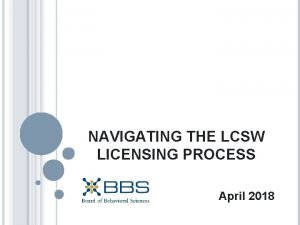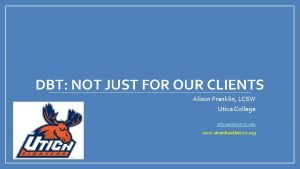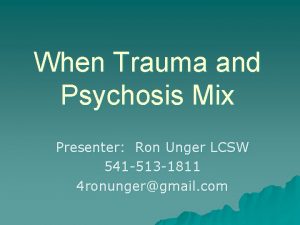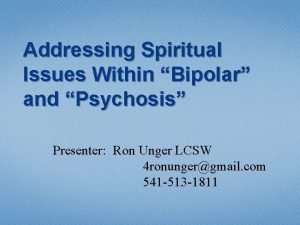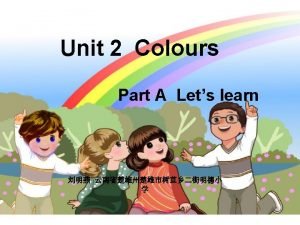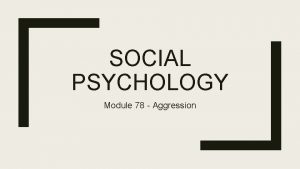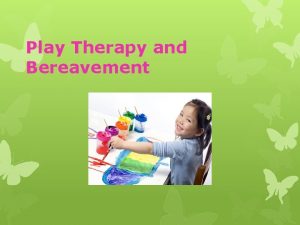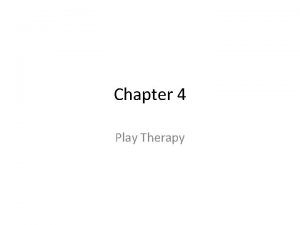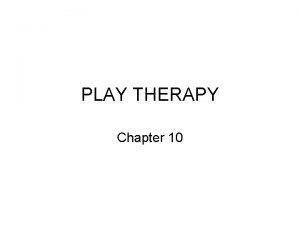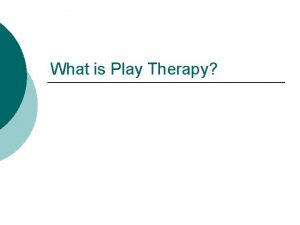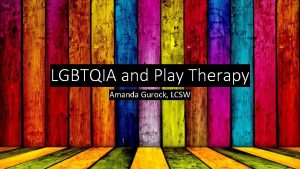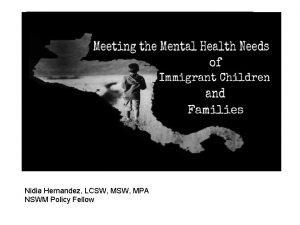Aggression in Play Therapy Dianna Green MSW LCSW












- Slides: 12

Aggression in Play Therapy Dianna Green, MSW, LCSW

Introduction • Identify differences among varying displays of anger and aggression in play therapy • Understand the importance of anger in the development of a child • Identify effective strategies for reducing expressions of anger

Points of Discussion • • Constructive vs Destructive Anger as a Tool The Mask of Anger Healthy Expression of Anger To Act Out or To Not Act Out Anger Addressing Anger in the Playroom

Constructive versus Destructive Anger • What is Anger- emotional state of being resulting from needs being unmet or frustrate or well-being threatened • Constructive/Healthy Anger- motivation to resolve triggering event and emotional state of being with behavior safe and positive for individual and environment • Destructive Anger- motivation to resolve triggering event and emotional state of being with disregard for safe of self and/or environment in short and/or long term consequences. • Hostile Anger

What Does Anger Look Like? • At Home- ▫ Sibling rivalry ▫ Disobedience ▫ Stubbornness ▫ Competitiveness ▫ Power Struggles • At School and the Community ▫ Behavior outbursts ▫ Work refusal ▫ Power Struggles • In the Playroom • Cheating • Refusal to engage therapist in play • Accidental breaking of toys • Forgetting rules • Passive Aggressive acts such as pouting

Anger as a Tool • Goal of anger is to create change ▫ What is your child client trying to change with his/her anger? • What is the unmet need anger is attempting to address? • Attempt to regain power and control

Mask of Anger • Social and Familial constructs of Anger and other emotions • Limited exposure to varied emotional expression • Anger as a more acceptable emotion or easier to access emotion than others ▫ Blended emotions ▫ Gender biases ▫ “unacceptable” emotions

Healthy Anger • • Is there such a thing? What Does it look like? Healthy competition, desire to achieve Decision making Assertiveness

Healthy Expressions of Anger • • Verbal communication Learning to effectively call an emotional “time out” Use of healthy coping skills Boundary setting

To Act Out or To Not Act Out Anger • Many techniques involve physical expressions of anger ▫ Is this the best option? ▫ Personal opinion vs. research • Emotional Outlets of expression • Physical Outlets of expression • Suggested Toys for Playroom▫ ▫ Ball Foam Swords Toy Soldiers Clay and other manipulatives

Addressing Anger in the Playroom • The therapeutic relationship as an example of anger management and expression • Use of boundaries and limits to help reinforce healthy anger expression and communication • Activities to practice frustration tolerance • Activities/interactions to enhance alternative positive coping skills • Activities/interactions to learn healthy emotion communication

Important Things to Remember • • • Avoid Power Struggles. Be Flexible Allow the child client to make decisions, even if it is the wrong one!!! Be compassionate and genuine in your therapeutic relationship Appropriately communicate disapproval of behavior Allow and promote outside of the playroom power and choice at an appropriate level
